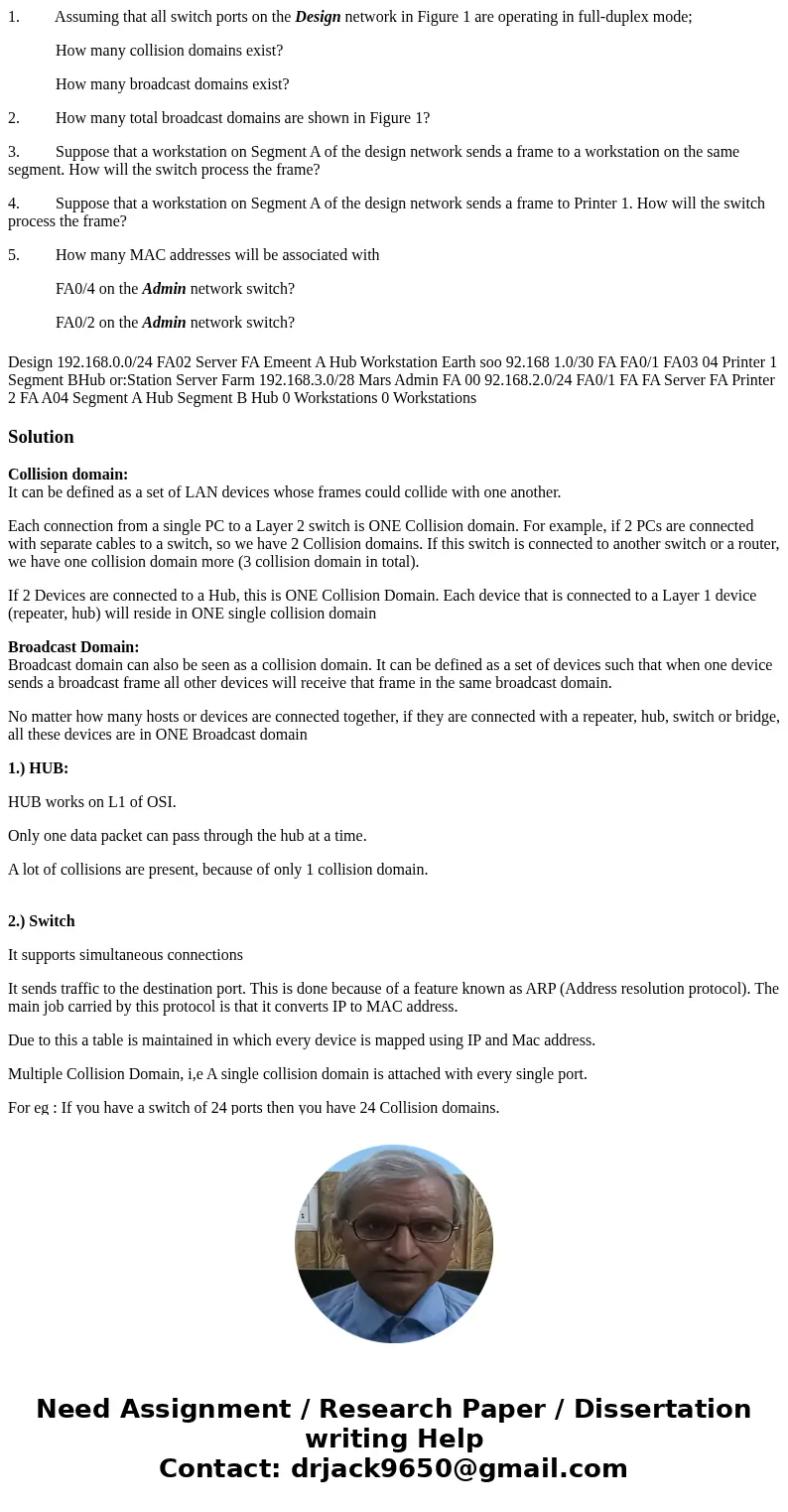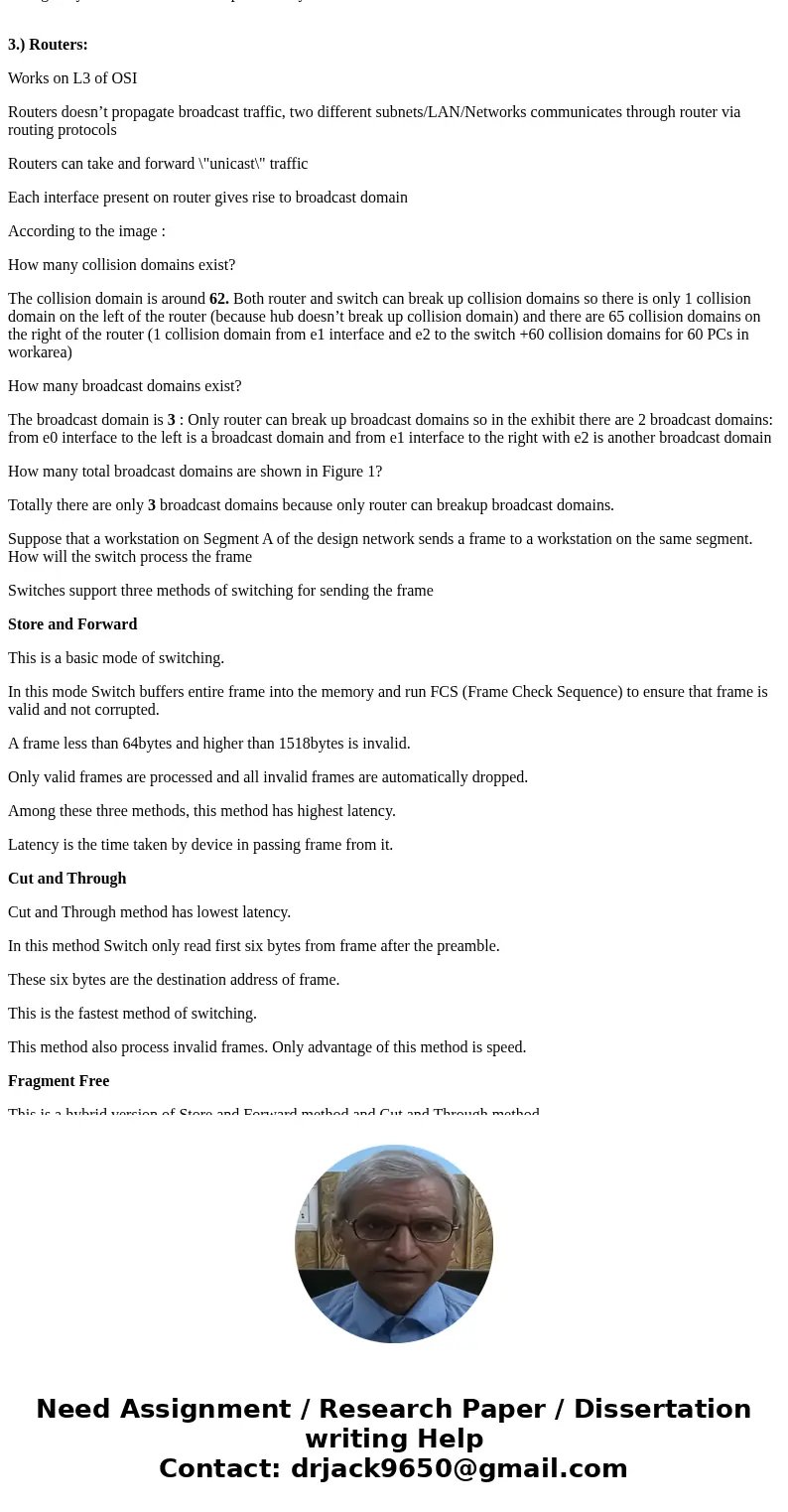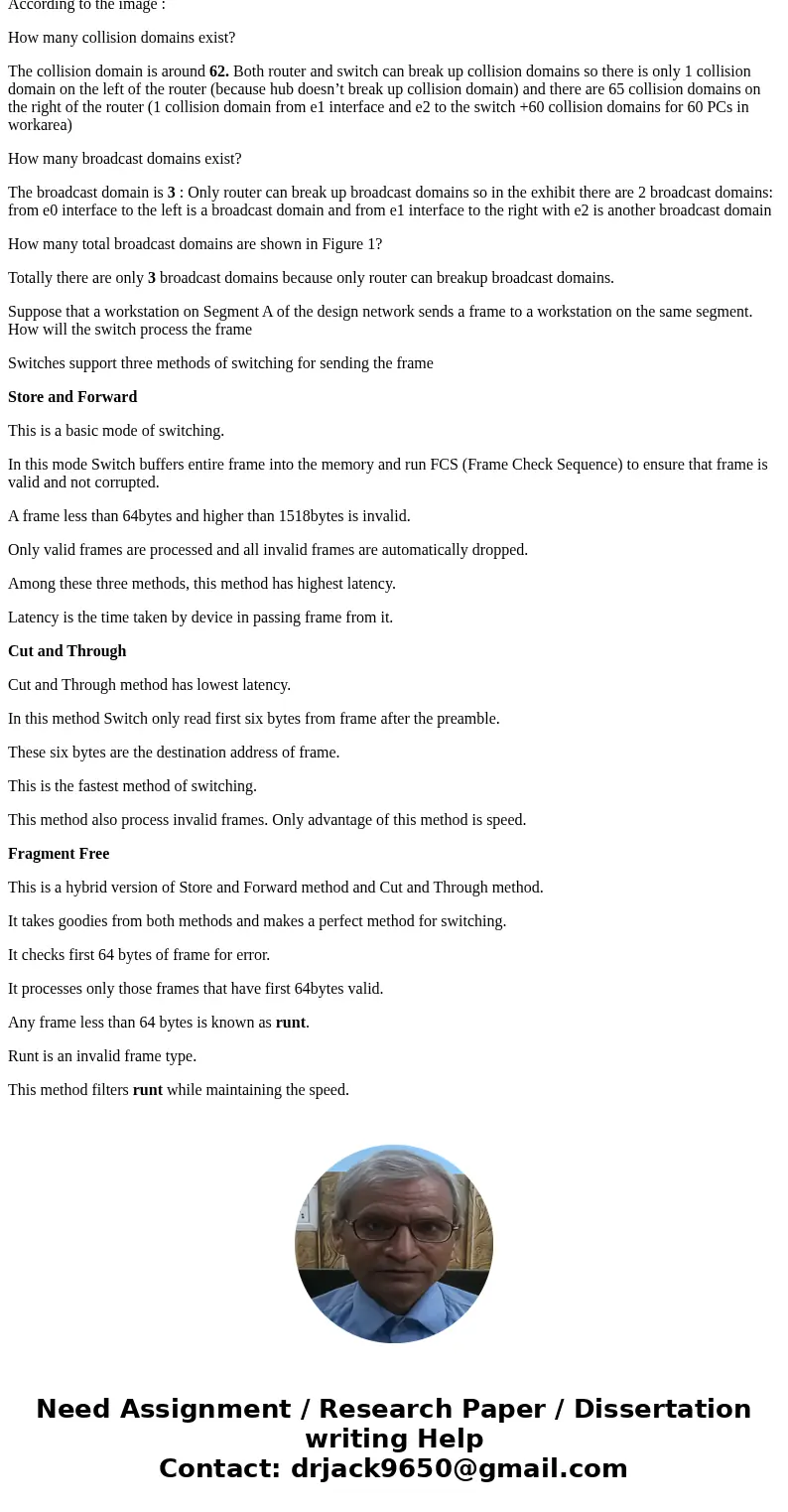1 Assuming that all switch ports on the Design network in Fi
1. Assuming that all switch ports on the Design network in Figure 1 are operating in full-duplex mode;
How many collision domains exist?
How many broadcast domains exist?
2. How many total broadcast domains are shown in Figure 1?
3. Suppose that a workstation on Segment A of the design network sends a frame to a workstation on the same segment. How will the switch process the frame?
4. Suppose that a workstation on Segment A of the design network sends a frame to Printer 1. How will the switch process the frame?
5. How many MAC addresses will be associated with
FA0/4 on the Admin network switch?
FA0/2 on the Admin network switch?
Solution
Collision domain:
It can be defined as a set of LAN devices whose frames could collide with one another.
Each connection from a single PC to a Layer 2 switch is ONE Collision domain. For example, if 2 PCs are connected with separate cables to a switch, so we have 2 Collision domains. If this switch is connected to another switch or a router, we have one collision domain more (3 collision domain in total).
If 2 Devices are connected to a Hub, this is ONE Collision Domain. Each device that is connected to a Layer 1 device (repeater, hub) will reside in ONE single collision domain
Broadcast Domain:
Broadcast domain can also be seen as a collision domain. It can be defined as a set of devices such that when one device sends a broadcast frame all other devices will receive that frame in the same broadcast domain.
No matter how many hosts or devices are connected together, if they are connected with a repeater, hub, switch or bridge, all these devices are in ONE Broadcast domain
1.) HUB:
HUB works on L1 of OSI.
Only one data packet can pass through the hub at a time.
A lot of collisions are present, because of only 1 collision domain.
2.) Switch
It supports simultaneous connections
It sends traffic to the destination port. This is done because of a feature known as ARP (Address resolution protocol). The main job carried by this protocol is that it converts IP to MAC address.
Due to this a table is maintained in which every device is mapped using IP and Mac address.
Multiple Collision Domain, i,e A single collision domain is attached with every single port.
For eg : If you have a switch of 24 ports then you have 24 Collision domains.
3.) Routers:
Works on L3 of OSI
Routers doesn’t propagate broadcast traffic, two different subnets/LAN/Networks communicates through router via routing protocols
Routers can take and forward \"unicast\" traffic
Each interface present on router gives rise to broadcast domain
According to the image :
How many collision domains exist?
The collision domain is around 62. Both router and switch can break up collision domains so there is only 1 collision domain on the left of the router (because hub doesn’t break up collision domain) and there are 65 collision domains on the right of the router (1 collision domain from e1 interface and e2 to the switch +60 collision domains for 60 PCs in workarea)
How many broadcast domains exist?
The broadcast domain is 3 : Only router can break up broadcast domains so in the exhibit there are 2 broadcast domains: from e0 interface to the left is a broadcast domain and from e1 interface to the right with e2 is another broadcast domain
How many total broadcast domains are shown in Figure 1?
Totally there are only 3 broadcast domains because only router can breakup broadcast domains.
Suppose that a workstation on Segment A of the design network sends a frame to a workstation on the same segment. How will the switch process the frame
Switches support three methods of switching for sending the frame
Store and Forward
This is a basic mode of switching.
In this mode Switch buffers entire frame into the memory and run FCS (Frame Check Sequence) to ensure that frame is valid and not corrupted.
A frame less than 64bytes and higher than 1518bytes is invalid.
Only valid frames are processed and all invalid frames are automatically dropped.
Among these three methods, this method has highest latency.
Latency is the time taken by device in passing frame from it.
Cut and Through
Cut and Through method has lowest latency.
In this method Switch only read first six bytes from frame after the preamble.
These six bytes are the destination address of frame.
This is the fastest method of switching.
This method also process invalid frames. Only advantage of this method is speed.
Fragment Free
This is a hybrid version of Store and Forward method and Cut and Through method.
It takes goodies from both methods and makes a perfect method for switching.
It checks first 64 bytes of frame for error.
It processes only those frames that have first 64bytes valid.
Any frame less than 64 bytes is known as runt.
Runt is an invalid frame type.
This method filters runt while maintaining the speed.



 Homework Sourse
Homework Sourse